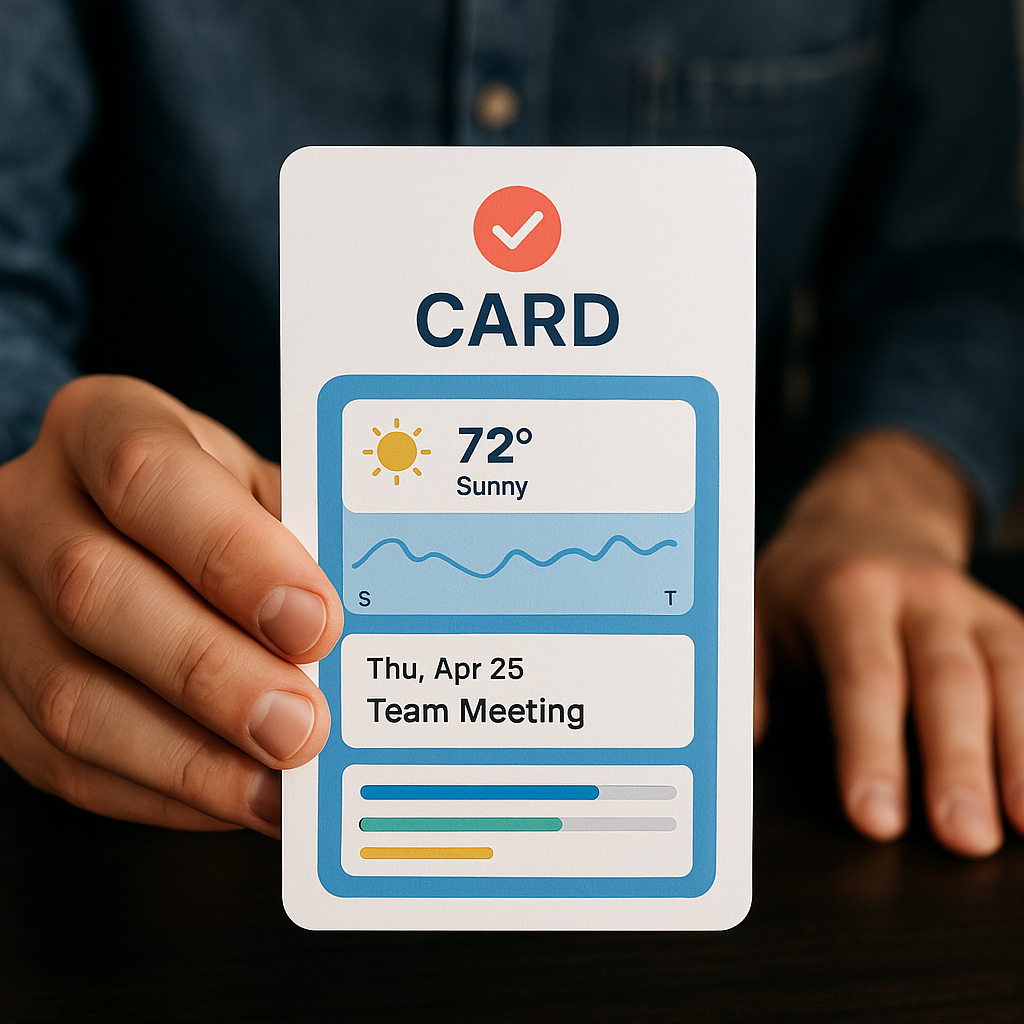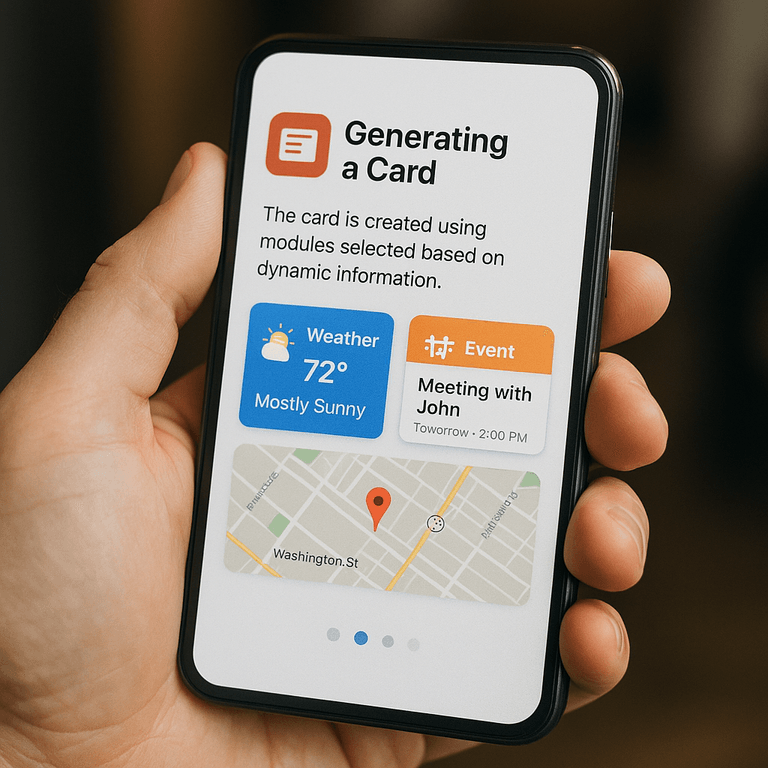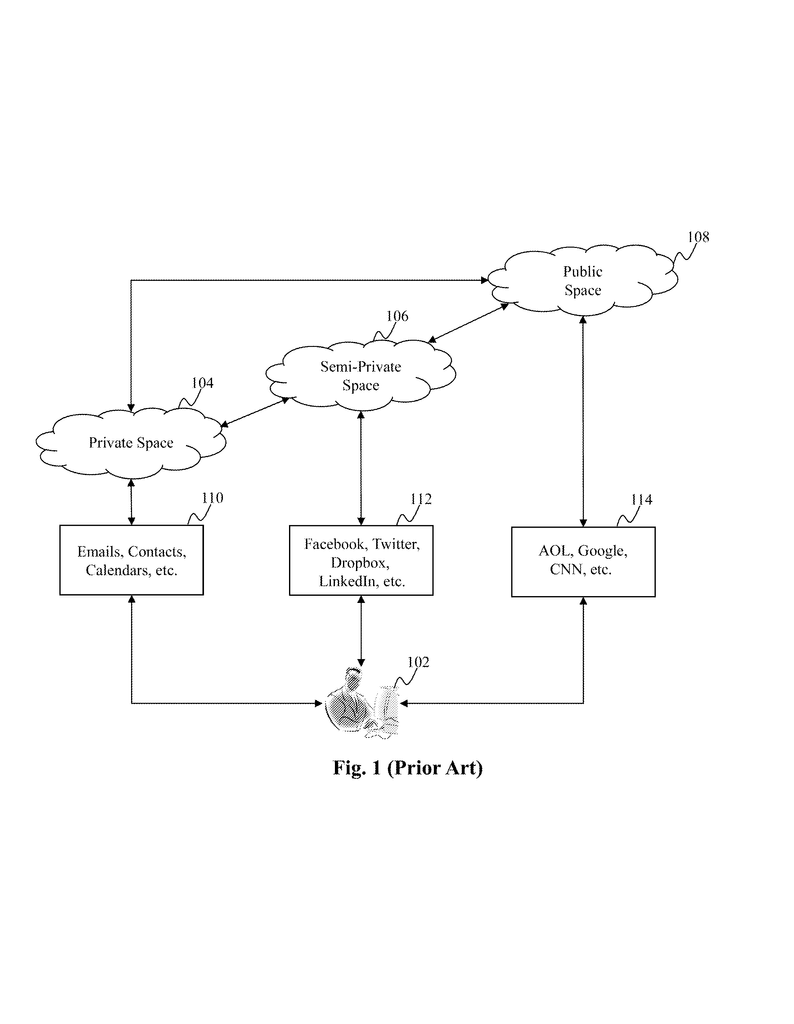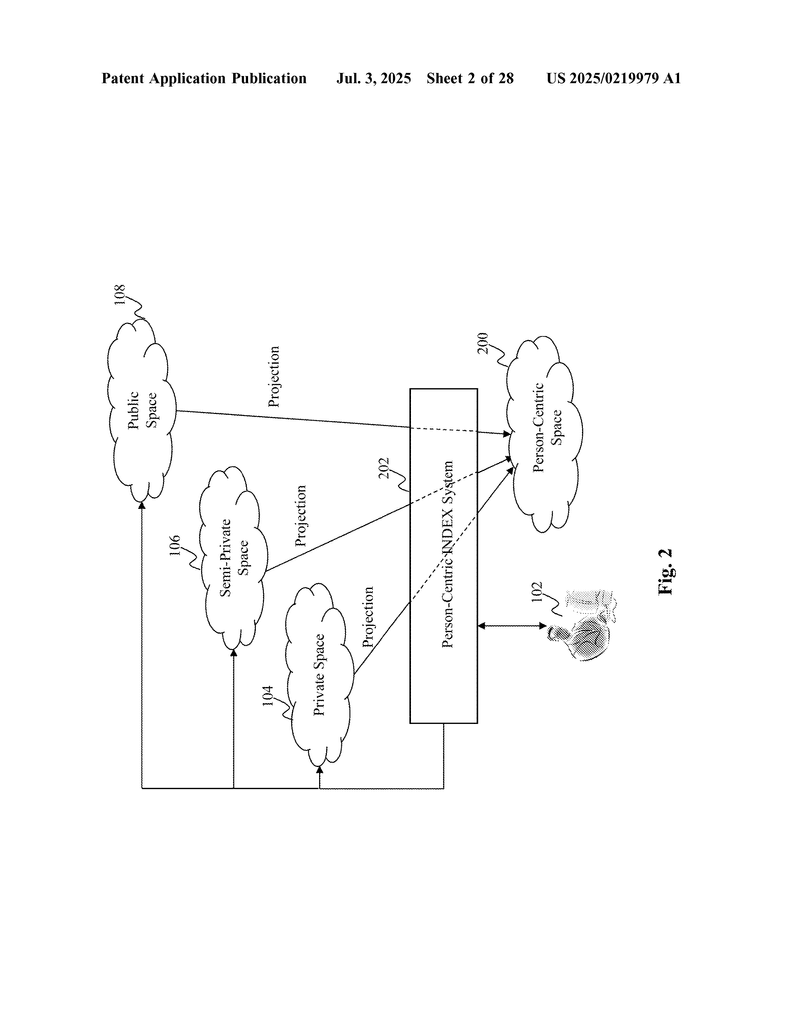Invented by Gupta; Abhay
In today’s world, everyone is flooded with information. It can be hard to find what really matters to you. A new patent application aims to solve this by creating “dynamic cards” that show you just what you need, when you need it. Let’s explore how this idea works, why it matters, and what makes it different from anything else out there.
Background and Market Context
With the rapid growth of the Internet and digital technologies, people have more access to information than ever before. You can look up news, check your email, join social media, and shop online all from a small device in your pocket. While this sounds wonderful, it also means you are constantly bombarded with more data than you can handle. This is often called “information overload.”
Imagine you want to check the status of a package you ordered. You might need to find the order email in your inbox, copy the tracking number, open a delivery company’s website, and paste the number to see where your package is. If you want to contact the seller, you might have to look for their details in your contacts or another app. Each piece of information sits in a different place, and you have to jump between many apps to piece everything together. This is not only time-consuming but also frustrating.
Many people now use a mix of “public” spaces (like Google or news sites), “semi-private” spaces (like social media or shared documents), and “private” spaces (like your email, calendar, or personal photos). But these spaces don’t talk to each other. If you want the full story about an event or a person, you have to manually search across all these places. That is a lot of work for something that should be simple.
Companies have tried to help by making apps that focus on one kind of information (like a calendar app or a news app) or by recommending content based on what they think you like. Some social media sites group people by interests. Others try to build a profile of your likes and dislikes, but this often depends on you telling them what you want, or them guessing based on your actions. These methods are not always accurate, and they don’t solve the problem of scattered information.
The problem gets even bigger on mobile devices, where screen size is small and you don’t want to tap through many apps to find something simple. People expect quick, clear answers and easy ways to act on the information they see. If you need to make a dinner reservation, you shouldn’t have to search your emails for the date, then check your calendar for free time, then search online for a restaurant, and then call to book. You want all the steps to be easy and connected.
This is where the idea of “dynamic cards” comes in. Instead of showing you a long list of links or making you jump between apps, a card brings together all the pieces you need in one place. These cards can change based on your question, the time, your habits, and the world around you. For example, searching “Super Bowl” a week before the game should show you ticket info, but the same search on game night should show you live streaming options. The goal is to give you information that fits your needs in the moment, not just a random list of links.
Scientific Rationale and Prior Art
Before this new approach, the main ways to organize and show information were “application-centric,” “domain-centric,” and “interest-centric.”
In an application-centric method, each app or website holds its own set of data. For example, your email sits in Gmail, your photos in Google Photos, your calendar in Outlook, and your social posts on Facebook. If you want information from more than one place, you have to open each app separately and switch between them. There is no easy way to connect the dots.
Domain-centric systems focus on specific topics, like sports, movies, or shopping. Websites like IMDB (for movies) or ESPN (for sports) are good examples. They gather lots of information about one subject, but if your needs cross more than one domain—like finding movie times for a dinner date—you’re back to switching apps and piecing things together yourself.
Interest-centric tools try to guess what you want based on your likes and habits. Social networks group users with similar hobbies. News and shopping sites suggest articles or products based on your past actions. This works only if you share your interests or if the system can guess them correctly, which doesn’t always happen. These methods also don’t link together information across your private, semi-private, and public spaces.
Some apps present information as “cards.” Google, for example, might show you a card with weather updates or a sports score. But these cards are usually static—they show the same kind of info for everyone or for common searches. Once the system recognizes you’re searching for an actor, it might show you an “actor card” with their bio and latest movies. But these cards don’t change based on your intent, the time, or your personal situation. If you search for “Super Bowl,” you might always get a general card about the event, no matter what you really want to do—like buy tickets, watch the game, or read reviews after it’s over.
Another problem with these older systems is that information in different spaces—your email, your social posts, and websites—remains separate. There’s no easy way to bring together an order confirmation in your email with a delivery update from a courier’s website and a review from an online store.
This new patent application introduces a “person-centric” approach. Instead of focusing on the app, domain, or interest, the system builds a space just for you. It gathers and links information from your private, semi-private, and public spaces. It looks at your behavior, the time, and the context to figure out exactly what you want. When you make a request, it creates a dynamic card by picking and organizing pieces of information that are relevant for you at that moment.
This idea goes beyond past efforts by:
- Bringing together data from many sources, both private and public, in a way that is meaningful to you.
- Understanding not just what you ask, but why you are asking (your “intent”), and adjusting the card based on that.
- Changing the card’s content and layout based on your device, the time, your past actions, and even current events.
- Allowing the same query to show different cards at different times, depending on your changing needs.
No other system tries to unify these spaces and build cards that truly change based on personal context and intent.
Invention Description and Key Innovations
At the heart of this invention is a method for generating “cards” based on your query, your intent, the current time, and your personal data landscape. Let’s break down how it works and what makes it unique.
Imagine you ask, “Where is my Amazon order?” The system first receives your query and records the time. It then estimates your intent—not just “find out about my order,” but maybe “track its delivery,” “check if it’s delayed,” or “see if it’s been delivered.” To do this, it looks at your “person-centric space,” a special container that links together your emails, social updates, and public tracking info. It gathers dynamic information related to your request—like the tracking number from your email, the latest status from the courier’s website, and any delivery notifications in your social feeds.
The system then chooses which pieces of information (“modules”) to include in your card. If you asked before the package is delivered, the card might show you the order details, expected delivery date, and a map of where the package is. After delivery, the card could change to show delivery confirmation and a prompt to write a review. The layout and content of the card are decided based on your intent, the time, and what information is available.
Here’s how the invention stands out:
1. Person-Centric Space:
The system builds a unique space for each user by cross-linking data from public (like news sites), semi-private (like social media), and private (like email and calendar) sources. This space isn’t just a pile of data; it’s organized according to what matters to you. When you make a request, the system pulls data from this space, so your card is always personal and relevant.
2. Intent Estimation:
The invention doesn’t just look at your words. It tries to understand your goal. For example, searching “Super Bowl” a week before the event likely means you want tickets; on game day, you probably want streaming info; after the game, you might look for reviews. The system uses the current time, your behavior, and your personal space to figure out what you really mean.
3. Dynamic Card Building:
Cards are built on-the-fly, not from fixed templates. The system selects which modules (like maps, contacts, reviews, or status updates) to include and how to arrange them. If you’re using a phone, the card might be simpler. If you’re on a laptop, it can show more detail. The card’s layout changes based on your device, the type of request, and your preferences.
4. Task Automation:
The system can turn cards into actions. If you ask about an order, it might automatically start tracking the package and send you updates without you asking. If you often look up traffic at 5 pm, it can send you a traffic card at that time, even if you don’t ask. It learns your patterns and acts before you even know you need something.
5. Unified Experience:
Instead of switching between apps and websites, you interact with one smart interface. The card gives you all the information you need, plus actions you can take—like calling a contact, booking a ticket, or checking a map—without jumping between different tools.
6. Adaptable Content:
The same query can produce different cards at different times. For example, searching “Super Bowl” can bring up ticket info, live streams, or reviews, depending on when you search. The system adapts to your changing intent and context.
7. Privacy and Control:
Your personal space is built with your permission. The system only uses data you allow it to access. You are in control of what is included in your person-centric space.
How it works behind the scenes:
When you make a request (like typing a query or asking a question), the system checks your person-centric space for relevant info. It estimates your intent using the query, the current time, your recent behavior, and your preferences. It then selects the best modules to show in your card—say, a summary of an email, a status update from a courier’s site, or a map. The card is organized and displayed in a way that fits your device and your needs. If your intent changes or new information comes in, the card updates itself.
Examples:
– If you get an order email from Amazon, the system can create a card that shows your order details and tracks the package. As the delivery date nears, the card updates with the latest status. If the package is delayed, you get a notification card right away.
– If you ask, “When is my son’s soccer game?” the system checks your emails, calendar, and even social media posts to find the answer. The card it builds shows the date, time, location (with a map), weather forecast, and contact info for the coach—all in one place.
– If you search for an actor, the card can show their bio, recent movies, and news. If you’re interested in booking tickets to a movie, the card adds a ticket purchase button and directions to the nearest theater.
Technical Structure:
The system includes several key parts:
– A card type determiner figures out what kind of card you need (answer, search result, notice, etc.).
– A module determiner picks which pieces of information should appear in the card.
– An intent engine estimates your goal.
– A dynamic card builder puts everything together, choosing layout and content, and displays it on your device.
– The person-centric space and knowledge database give the system a rich, connected view of your data.
All these parts work together to turn your scattered data into clear, useful cards.
Conclusion
The dynamic card generation system described in this patent is a giant step forward in making information personal, useful, and easy to access. By building a smart space that connects your private, semi-private, and public data, and by truly understanding what you want, the system delivers the right information at the right time, every time. Cards are built just for you, change with your needs, and turn scattered data into simple, actionable answers.
For users, this means less searching, less switching between apps, and more getting things done. For businesses and developers, it opens up new ways to engage users by making every interaction smarter and more personal. As our digital lives get more complex, inventions like this will be key to keeping information overload in check and making technology work for us—not against us.
Click here https://ppubs.uspto.gov/pubwebapp/ and search 20250219979.




